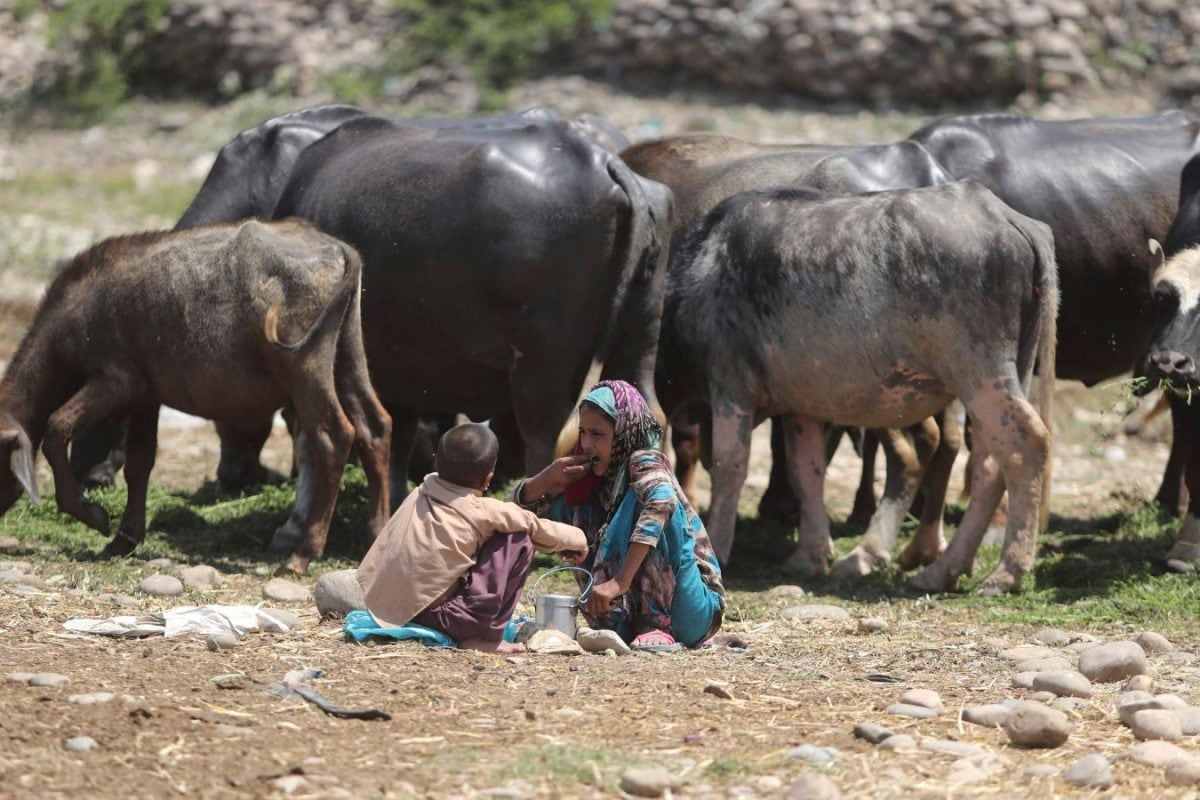

India is currently grappling with a surge in cattle virus infections, most notably lumpy skin disease (LSD), which has had a devastating impact on the dairy industry. While an indigenous vaccine, Lumpi-ProVacInd, has been developed and is expected to be a game-changer, the nation is still largely dependent on the goat pox vaccine to protect its cattle population. This interim measure raises important questions about the strategy to combat the disease and the reliance on a vaccine intended for a different species despite having an indigenous alternative.
Lumpy skin disease is a viral ailment that affects cattle and buffaloes, characterized by fever, skin nodules, and decreased milk production. The disease can be fatal, and even in cases of recovery, it can leave animals weakened and unproductive, causing significant economic losses for farmers. The rapid spread of LSD across various states in India has prompted urgent action, including widespread vaccination campaigns and restrictions on cattle movement.
In the absence of a readily available, specific vaccine for LSD, the Indian government has recommended the use of the goat pox vaccine as a precautionary measure. This is because the LSD virus belongs to the same family of viruses that cause smallpox, monkeypox, sheep pox, and goat pox. The goat vaccine has demonstrated effectiveness in providing cross-protection against LSD, albeit requiring a higher dosage (three times more) for cattle and buffaloes. While it may not be a perfect solution, it offers a degree of protection against severe illness and death, buying time until a more targeted vaccine becomes available.
However, this approach is not without its drawbacks. While the goat pox vaccine can reduce the severity of LSD, it is not specifically designed for cattle and may not provide the same level of immunity as a species-specific vaccine. There may also be concerns about potential side effects or reduced efficacy compared to its performance in goats. Furthermore, the reliance on a vaccine intended for another species could potentially mask the true extent of the LSD outbreak, making disease surveillance and control more challenging.
The good news is that India has developed its own indigenous LSD vaccine, called Lumpi-ProVacInd. ICAR readied Lumpi-ProVacInd after two years of research since the first outbreak in India in 2019. Biovet, a Bharat Biotech company, has also received approval to market Biolumpivaxin against LSD. This vaccine, developed by the Indian Council of Agricultural Research (ICAR), offers a more targeted and potentially more effective solution for controlling LSD in cattle. It is a live-attenuated vaccine, meaning it contains a weakened form of the virus that can stimulate an immune response without causing disease. Moreover, it is a single-dose vaccine that can be administered annually to cattle and buffaloes over three months of age.
Biolumpivaxin is the world's first Differentiating Infected from Vaccinated Animals (DIVA) marker vaccine, which means experts can distinguish between vaccinated and naturally infected dairy cattle. The vaccine virus was not detected in milk, semen, or other bodily excretions from the vaccinated animals. According to the company, it can produce 500 million doses of the vaccine that will soon be available commercially.
Given the availability of an indigenous vaccine, the continued reliance on the goat pox vaccine raises questions about the transition strategy. Factors such as production capacity, distribution logistics, cost, and regulatory approvals may be influencing the pace at which the indigenous vaccine is being rolled out. It is also possible that the government is adopting a phased approach, prioritizing the use of the goat pox vaccine in high-risk areas while gradually introducing the indigenous vaccine as supplies increase.
While the goat pox vaccine has served as a valuable tool in mitigating the immediate impact of the LSD outbreak, it is essential to prioritize the widespread adoption of the indigenous vaccine to achieve long-term control and eradication of the disease. This will require ramping up production, streamlining distribution, and conducting comprehensive vaccination campaigns to ensure that all susceptible animals are protected. Furthermore, continued research and development efforts are needed to improve the efficacy and duration of protection of the indigenous vaccine, as well as to develop new diagnostic tools for rapid and accurate disease detection.